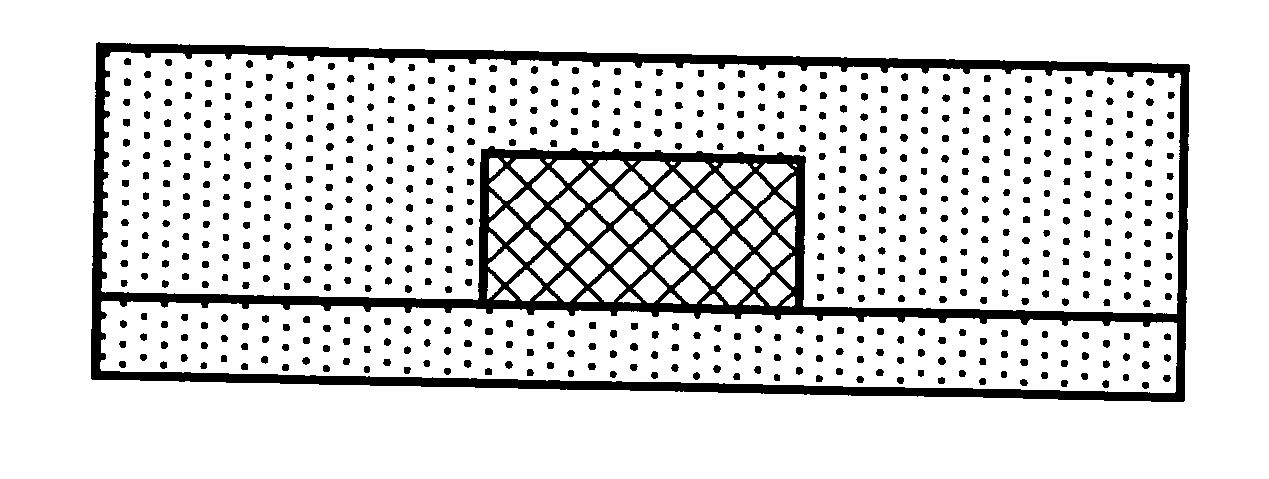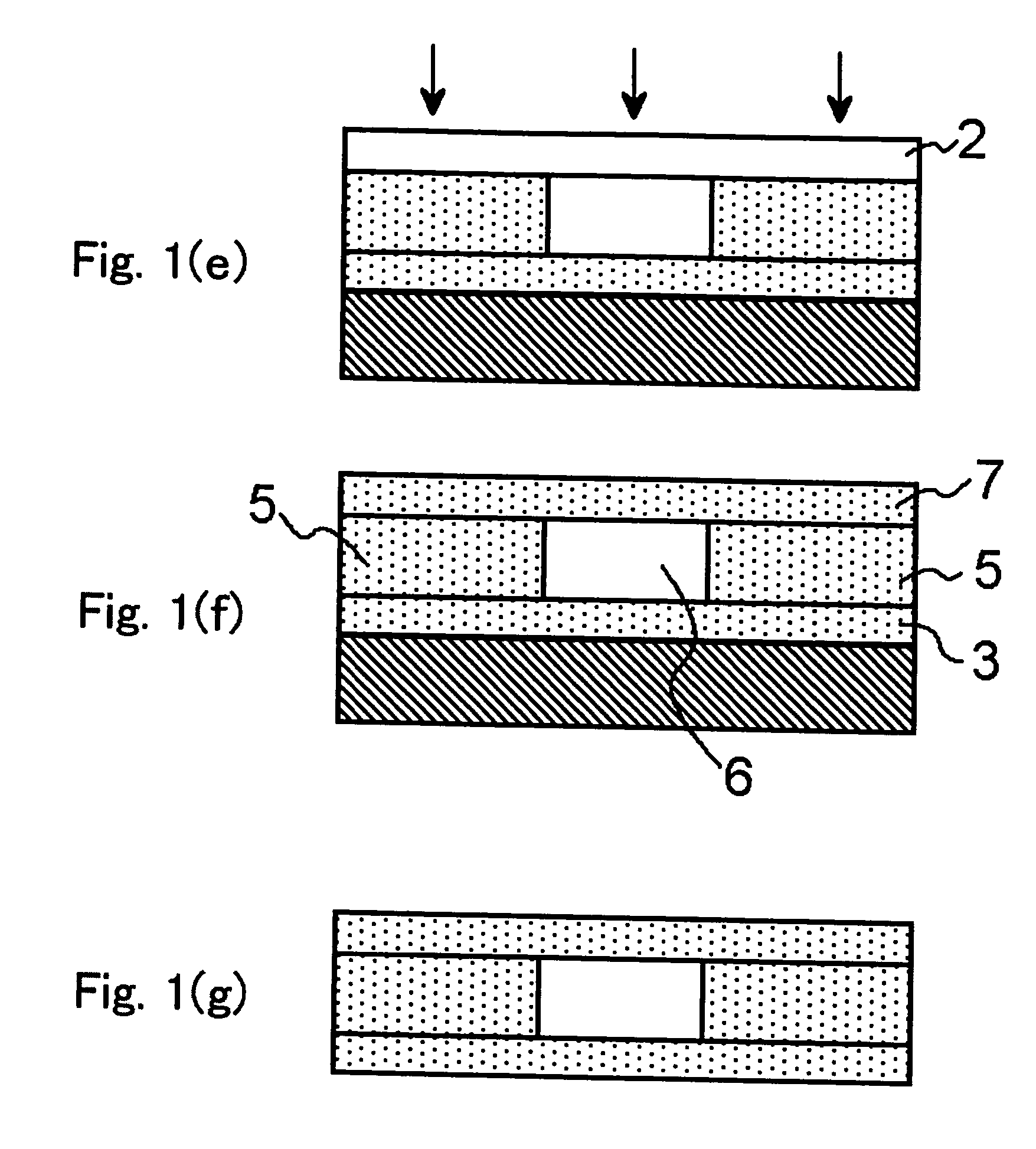Photosensitive resin composition for forming optical waveguide, optical waveguide, and method for forming optical waveguide pattern
a technology of resin composition and optical waveguide, which is applied in the direction of photomechanical equipment, instruments, optical elements, etc., can solve the problems of polymer waveguides, large-area waveguides, and generally having low thermal resistance, and achieve excellent transmission properties and low propagation loss
- Summary
- Abstract
- Description
- Claims
- Application Information
AI Technical Summary
Benefits of technology
Problems solved by technology
Method used
Image
Examples
synthesis example 1
[0087] A polymer having the following structure, specifically, a polymer of the general formula (1), wherein R1 to R5 are each a hydrogen atom, was synthesized.
[0088] In 200 ml of N-methyl-2-pyrrolidone (NMP), 20 g of o-aminophenol was dissolved, and the solution was cooled on an ice bath. 8.546 Grams (1.1 molar equivalents) of lithium chloride was added thereto. After lithium chloride was completely dissolved, 17.42 g (1.05 molar equivalents) of acryloyl chloride was added dropwise, and the mixture was stirred for 5 hours under ice-cooling. The reaction mixture was poured into 1.8 L of water, and the organic layer was extracted with 700 ml of diethyl ether. The diethyl ether layer was washed with 0.2N hydrochloric acid, brine and water in this order, and dried over magnesium sulfate. Diethyl ether was distilled off under reduced pressure. To the solidified residue, 80 ml of diisopropyl ether was added. The mixture was stirred under heating, washed, and filtered. The filtered mate...
synthesis example 2
[0090] A polymer having the following structure, specifically, a polymer having 70 mol % of a structural unit of the general formula (1), wherein R1 to R5 are each a hydrogen atom, and 30 mol % of a structural unit of 3,4-epoxycyclohexyl methylmethacrylate corresponding to the general formula (2) was synthesized.
[0091] In 124 ml of THF, 28 g of N-(2-hydroxyphenyl)acrylamide and 14.43 g of 3,4-epoxycyclohexyl methylmethacrylate were dissolved, and 0.804 g of 2,2′-azobis(isobutyronitrile) was added to the solution. The mixture was heated to reflux in an argon atmosphere for 2 hours. After being allowed to cool, the resultant was reprecipitated in 1,000 ml of diethyl ether. The precipitated polymer was separated by filtration, and the filtered material was again reprecipitated and purified to obtain 35.64 g of a target polymer (yield: 84%). The weight-average molecular weight (Mw) was 14,800 (in terms of polystyrene), and the molecular weight distribution (Mw / Mn) was 3.44 according t...
synthesis example 3
[0092] A polymer having the following structure, specifically, a polymer having 90 mol % of a structural unit of the general formula (1), wherein R1 to R5 are each a hydrogen atom, and 10 mol % of a structural unit of 3,4-epoxycyclohexyl methylmethacrylate corresponding to the general formula (2), was synthesized.
[0093] In 62 ml of THF, 18 g of N-(2-hydroxyphenyl)acrylamide and 2.41 g of 3,4-epoxycyclohexyl methylmethacrylate were dissolved, and 0.402 g of 2,2′-azobis(isobutyronitrile) was added to the solution. The mixture was heated to reflux in an argon atmosphere for 2 hours. After being allowed to cool, the resultant was reprecipitated in 1,000 ml of diethyl ether. The precipitated polymer was separated by filtration, and again reprecipitated and purified to obtain 16.33 g of a target polymer (yield: 80%). The weight-average molecular weight (Mw) was 10,800 (in terms of polystyrene), and the molecular weight distribution (Mw / Mn) was 3.78 according to GPC analysis.
PUM
| Property | Measurement | Unit |
|---|---|---|
| wavelength | aaaaa | aaaaa |
| molecular weight distribution | aaaaa | aaaaa |
| molecular weight distribution | aaaaa | aaaaa |
Abstract
Description
Claims
Application Information
 Login to View More
Login to View More - R&D
- Intellectual Property
- Life Sciences
- Materials
- Tech Scout
- Unparalleled Data Quality
- Higher Quality Content
- 60% Fewer Hallucinations
Browse by: Latest US Patents, China's latest patents, Technical Efficacy Thesaurus, Application Domain, Technology Topic, Popular Technical Reports.
© 2025 PatSnap. All rights reserved.Legal|Privacy policy|Modern Slavery Act Transparency Statement|Sitemap|About US| Contact US: help@patsnap.com



